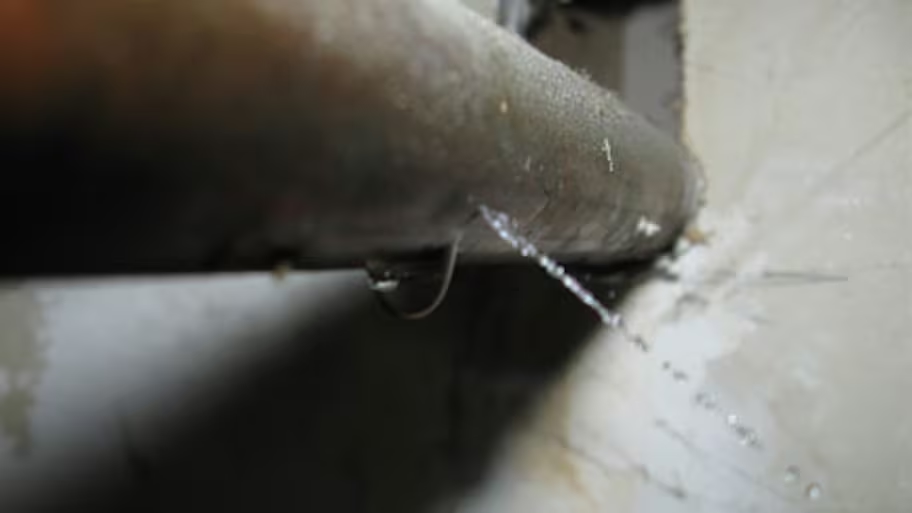Were you trying to locate insight around How to detect water leaks in your home?

Leaks not only cause waste of water but can also cause unnecessary damages to your residence and also advertise undesirable natural growth. Sadly, water leakages may go unnoticed considering that most of the pipework in our home is concealed. By understanding as well as looking for daily situations that cause leakages, you can secure your home from future leaks and unneeded damage. Today, we will take a look at six leakage triggers that might be triggering your pipes to trickle.
Instant temperature changes.
Severe temperature changes in our pipelines can trigger them to broaden and contract all of a sudden. This growth as well as contraction may trigger fractures in the pipelines, especially if the temperature level are below cold.
Rusty water systems
This could be the reason of staining or warping on your water pipelines. If our plumbing system is old, take into consideration replacing the pipes because they are at a higher threat of rust than the more recent designs.
Defective Pipeline Joints
The point at which your pipes attach is often the weakest web link in the waterline. Pipe joints can degrade over time, leading to water leakages. The bulk of pipeline joints are not conveniently noticeable. If you have loud pipes that make ticking or banging sounds, particularly when the warm water is switched on, your pipe joints are probably under a great deal of pressure. It is advisable to have your plumber examine your system yearly.
Encroaching roots
The majority of water leakages begin outside your home instead of inside it. If you notice a sudden decline in water pressure, say in your faucet, take some time to go out and also examine your backyard. You may notice damp spots or sinkholes in your lawn, and that may suggest that tree roots are attacking water lines triggering water to permeate out. You can have your plumber check for invasion, specifically if you have trees or bushes near your home.
Poor Water Connectors
At times, a leak can be triggered by loose pipes as well as pipelines that supply your home appliances. In situation of a water connections leakage, you may discover water running directly from the supply line or puddles around your appliances.
Obstructed Drains
Obstructed drains pipes may be bothersome and also inconveniencing, but they can often wind up causing an overflow causing break pipelines. Keep removing any type of products that might drop your drains pipes that can clog them to avoid such hassles.
All the above are root causes of leaks however not all water leakages result from plumbing leaks; some leaks might come from roofing system leaks. All leakages need to be fixed promptly to prevent water damage.
Leaks not just trigger waste of water however can also create unneeded damage to your home and also advertise unwanted organic development. By understanding and also looking for day-to-day circumstances that create leaks, you can protect your home from future leakages as well as unnecessary damages. Today, we will look at six leakage triggers that might be triggering your pipes to drip.
At times, a leakage can be created by loosened pipes and pipelines that supply your home appliances. In instance of a water links leakage, you might see water running straight from the supply line or puddles around your devices.
How To Check For Water Leak In Your Home
How To Check for Leaks
The average household's leaks can account for nearly 10,000 gallons of water wasted every year and ten percent of homes have leaks that waste 90 gallons or more per day. Common types of leaks found in the home are worn toilet flappers, dripping faucets, and other leaking valves. These types of leaks are often easy to fix, requiring only a few tools and hardware that can pay for themselves in water savings. Fixing easily corrected household water leaks can save homeowners about 10 percent on their water bills.
To check for leaks in your home, you first need to determine whether you're wasting water and then identify the source of the leak. Here are some tips for finding leaks:
Take a look at your water usage during a colder month, such as January or February. If a family of four exceeds 12,000 gallons per month, there are serious leaks.
Check your water meter before and after a two-hour period when no water is being used. If the meter changes at all, you probably have a leak.
Identify toilet leaks by placing a drop of food coloring in the toilet tank. If any color shows up in the bowl after 10 minutes, you have a leak. (Be sure to flush immediately after the experiment to avoid staining the tank.)
Examine faucet gaskets and pipe fittings for any water on the outside of the pipe to check for surface leaks.
Undetected water leaks can happen without the home or business owner even realizing. If you suspect a water leak, but not able to find the source. It is time to contact a professional water leak detection service, The Leak Doctor.
How To Find a Water Leak In Your Home
https://www.leakdoctor.com/blog/How-To-Check-For-Water-Leak-In-Your-Home_AE197.html

We were shown that editorial about Most Common Causes of Leaky Pipes from a friend on our other blog. If you please take the opportunity to distribute this blog posting if you enjoyed it. Bless you for your time. Come back soon.
Secure fix? Call.